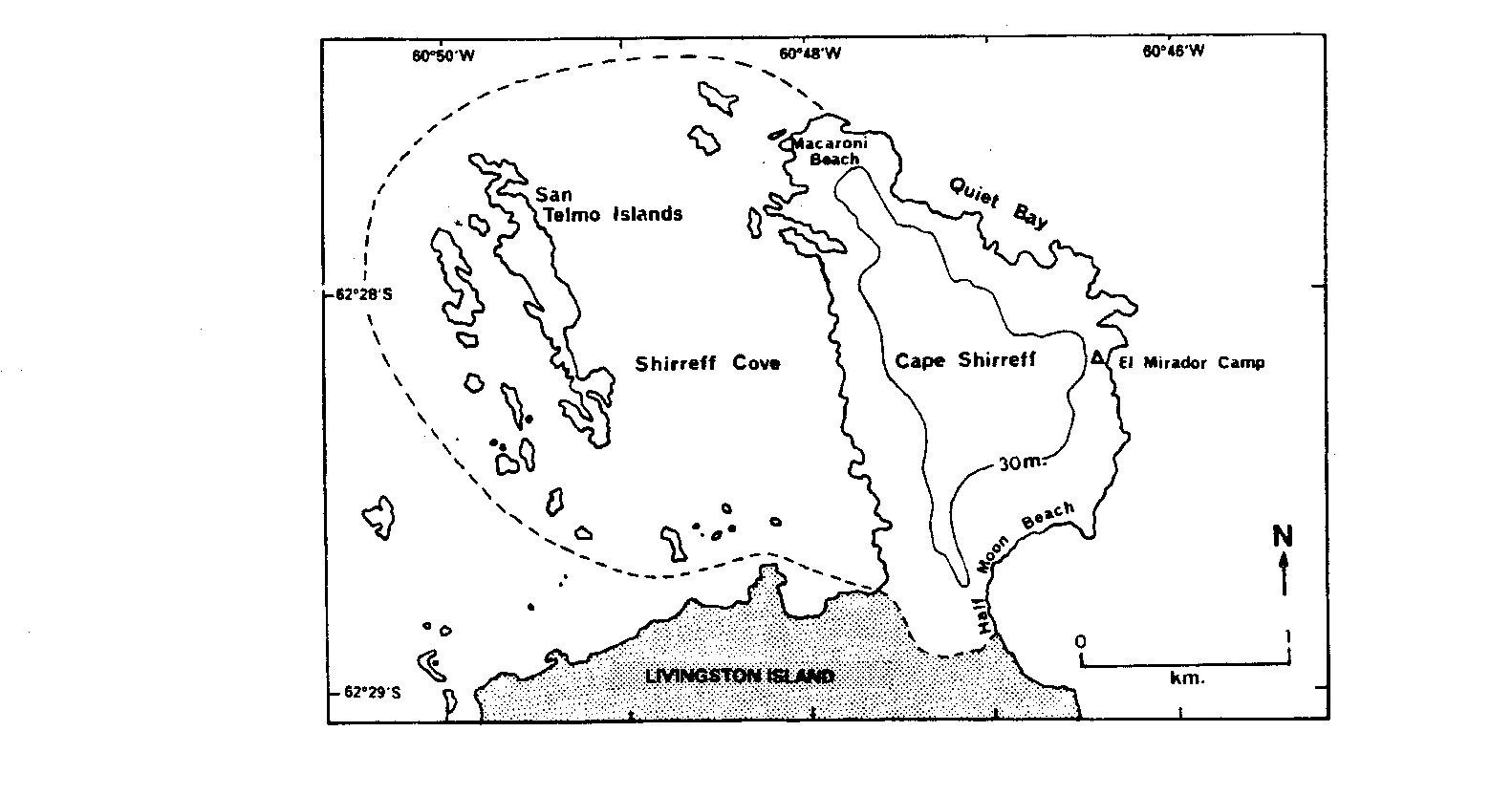Regulation 16
SCHEDULE 3PROTECTED PLACES
No. 1 Seal Islands, South Shetland Islands Lat. 60°59'S; Long. 55°23'W
The Seal Islands are composed of small islands and skerries located approximately 7 km north of the northwest corner of Elephant Island, South Shetland Islands. The Seal Islands Protected Place includes the entire Seal Islands group, which is defined as Seal Island plus any land or rocks exposed at mean low tide within a distance of 5.5 km of the point of highest elevation on Seal Island. Seal Island is the largest island of the group, and is situated at Lat. 60°59'S, Long. 55°23'W.
The Seal Islands cover an area approximately 5.7 km from east to west and 5 km from north to south. Seal Island is joined to the adjacent island to the west by a narrow sand bar that is approximately 50 m long.
No. 2 Cape Shirreff and the San Telmo Islands, South Shetland Islands Lat. 62°27'S; Long. 60°47'W
Cape Shirreff is a low, ice-free peninsula towards the western end of the north coast of Livingston Island, South Shetland Islands, situated at Lat. 62°27'S, Long. 60°47'W, between Barclay Bay and Hero Bay. San Telmo Island is the largest of a small group of ice-free rock islets, approximately 2 km west of Cape Shirreff. Cape Shirreff is approximately 3 km from north to south and 0.5 to 1.2 km from east to west.
No man-made markers indicate the limits of the Protected Place, the boundaries being defined by natural features (i.e. coastlines or glacial margins). Its southern boundary is bordered by a permanent glacial ice barrier, which is located at the narrowest part of the Cape. The eastern side of the base of the Cape has two beaches with a total length of about 600 m. Above this the extremity of the Cape has a rocky barrier about 150 m long. The western side is formed by almost continuous cliffs 10 to 15 m high. Near the southern base of the Cape on the western side is a small sandy beach approximately 50 m long.

